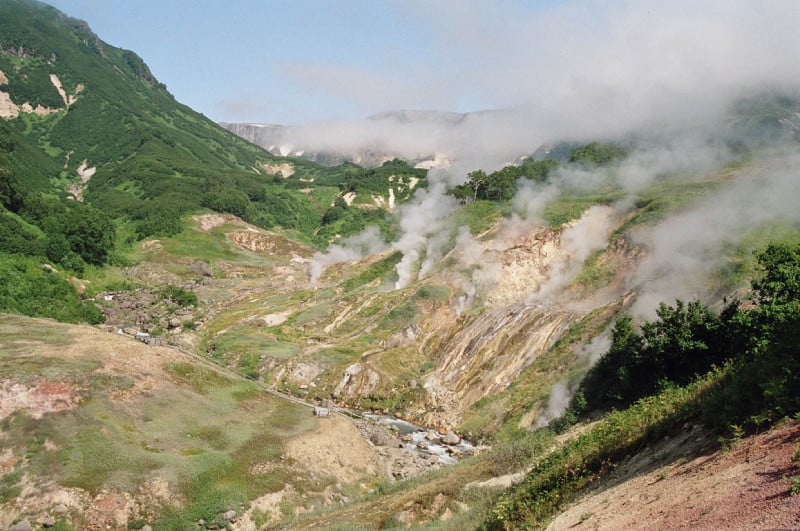
Valley of Geysers Facts
- The Valley of Geysers serves as the name of a large geyser field located on the Kamchatka Peninsula, Russia, in Europe. Consequently, this geological marvel also holds the second largest concentration of geysers on earth.
- The basin measures about 3.7 mi (6 km) in length. Located in the Valley of Geysers is a total of ninety geysers. It also contains numerous hot springs.
- The majority of the area sits on the left bank of the Geysernaya River. A young stratovolcano also exists in the Valley of Geysers. The IUCN named the location a World Heritage Site.
Related Articles
Valley of Geysers History
A locally based scientist actually discovered the Valley of Geysers in 1941. The reason for the late discovery was the terrain of the region.
The area formed in such a remote and rugged spot that the only way to reach the valley remains via helicopter. So, no human actually explored the region until 1972.
However, experts put an automatic monitoring system in place in 1990, to monitor the seismic activity.
More than 30 of the most prominent geysers now have names. One, known as the Giant Geyser, produces jets of water that rise as much as 130 ft (40 m) into the air.
Since tours of the Valley of Geysers began in 1991, roughly 3,000 visit the site annually.
Valley of Geysers Damage
On June 3, 2007, an enormous mudflow buried almost two-thirds of the Valley of Geysers, in an unfortunate natural catastrophe.
Though experts remain rather uncertain, it also appears that much of the damage to the natural marvel remains irreversible.
The IUCN itself also expressed its concerns over the loss of such a natural wonder. Two days after the mudflow, a thermal lake began forming above the valley.
Since that time, however, the waters have receded somewhat, and some of the geysers re-emerged above the water. The so-named Giant Geyser also appears to still be active.
Features Sharing Its Region
Check out our other articles on 4 Startling Atlantic Ocean Sharks, Australian Sea Lion, Table Mountain, Autumn Meadowhawk, Balsam Fir, Rose’s Ghost Frog, Weka, Orinoco Crocodile
